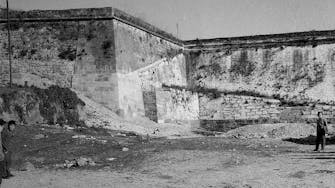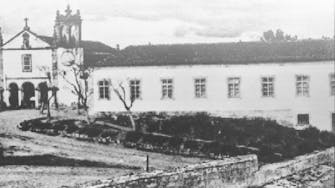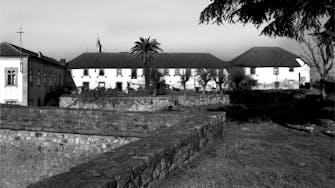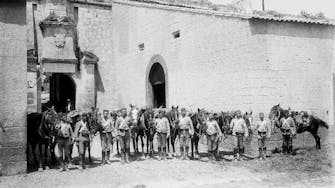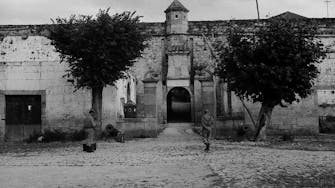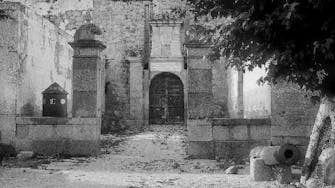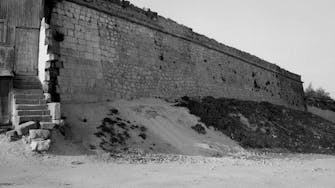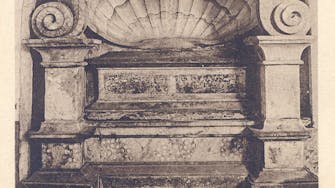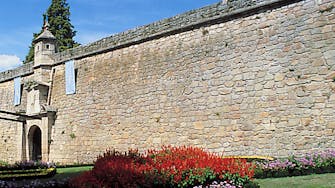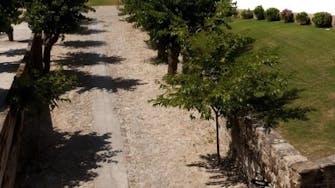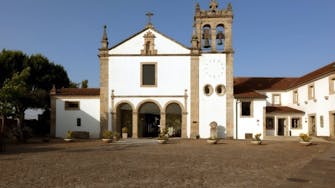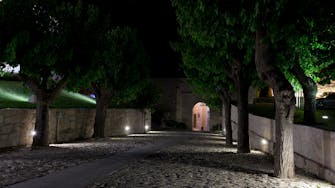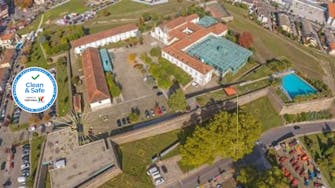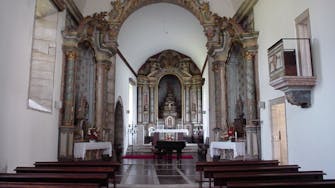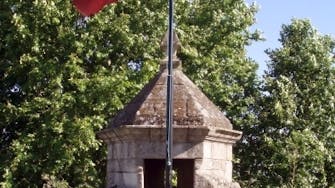Forte S. Francisco
Construction -Afonso_VI (1658-1662)
Style - 17th century
Homologation (IGESPAR)-MN (DL 28.536 of DG 66, 22 March 1938).
The Nossa Senhora do Rosário Fort, better known as the São Francisco de Chaves Fort, is located in the city of Chaves, parish of Stª Maria Maior (Chaves), municipality of Chaves, district of Vila Real, in Portugal.
Together with the Fort of São Neutel, this fort, in a dominant position on the Pedisqueira hill, next to the Tâmega river and the old Roman bridge, was intended to defend the city, on the border of Galicia, at the time of the War of Restoration.
History
Antecedents
The fort dates back to a Franciscan convent - the Convento de Nossa Senhora do Rosário - erected in the early 16th century, which gave it its name. According to a deed signed with Friar Rodrigo de Morais in 1446, it was the architect Mestre Joanes de Cibrão who designed the convent's vault.
The Fort of Nossa Senhora do Rosário
In the context of the War for the Restoration of Independence, the importance of the city's strategic position near the border was recognised, and it was necessary to modernise its medieval defences. In order to avoid the neighbouring hills being occupied by enemy artillery batteries, these positions were garrisoned.
On the Pedisqueira hill, where the old Franciscan Convent used to be, it was decided to surround it with bastion walls, turning it into a fortress. The works were developed under the orders of the Governor of the Weapons of the Province of Trás-os-Montes, D. Rodrigo de Castro, Count of Mesquitela, between 1658 and 1662. The Chaves defence works were complemented with the construction of new wall panels connecting the fort to the old medieval walls, reinforced or rebuilt on the occasion, involving the neighbourhoods that had expanded outside the medieval walls. The defence was extended to the old Roman bridge over the Tâmega, whose access, on the opposite bank, was also fortified, with the construction of the Revelim da Madalena.
In the beginning of the 19th century, during the Peninsular War, Chaves and its defences were in no condition to defend itself. After several clashes with Napoleonic troops under General Soult, the Portuguese troops, under General Francisco da Silveira Pinto da Fonseca Teixeira, retreated to strategic points, leaving the city with a small garrison under Lieutenant-Colonel Pizarro. These forces, as well as the militia that faced the enemy, were imprisoned and later liberated. Fort São Francisco was used as headquarters for the French on the occasion, and in this capacity was the target of General Silveira's counter-offensive in March 1809. After six days of violent fighting, the French garrison surrendered and Chaves was liberated.
Later, it was still the scene of fighting during the Liberal Wars and, even later, in 1910, during the Proclamation of the Portuguese Republic.
Once its defensive function was lost, after housing the 10th Hunters Battalion for almost seventy years, the fort's dependencies were abandoned, entering a process of ruin.
From the 20th century to the present day
It was classified as a National Monument by Decree No. 28,536, published on 22 March 1938.
The intervention of the public power, through the Directorate General of National Buildings and Monuments (DGEMN) took place from 1957, when conservation works were promoted. Several stages of consolidation, cleaning, clearance, repair and reconstruction took place in the following decades, until, on 16 January 1989, the Fort of São Francisco was given, on a temporary basis, to the Municipality of Chaves. In the second half of the 1970s, the fort's premises served as temporary accommodation for families returning from the former Portuguese colonies in Africa.
In 1994, the fort premises were re-qualified as a hotel unit, a venture promoted by the Sociedade Forte de S. Francisco, Hoteis, Ldª, with a project by the architect Pedro Jalles. The Forte de São Francisco Hotel, inaugurated on 19 May 1997, is classified with four stars and provides fifty-eight rooms to visitors ,as well as, bar and restaurant, tennis court, swimming pool and sauna, among other services. In early 2019, the Hotel underwent a major set of renovation and decoration works, adding modernity and comfort without losing all its historical context.
Features
The fort presents a simple plan in a star-shaped format, with four bastions at the vertices, in the Vauban system. The walls, with a thickness of one metre, vary between four and twenty metres in height and are covered in granite.
The main access is made through a gate on the south side, through a drawbridge over the moat, currently filled in. There are secondary accesses on the east and west sides, all leading through tunnels to the Praça de Armas.
Among the buildings inside the fort, the old Chapel of São Francisco stands out. It housed the tomb of Dom Afonso, the first Duke of Bragança for three centuries, until 1942.


